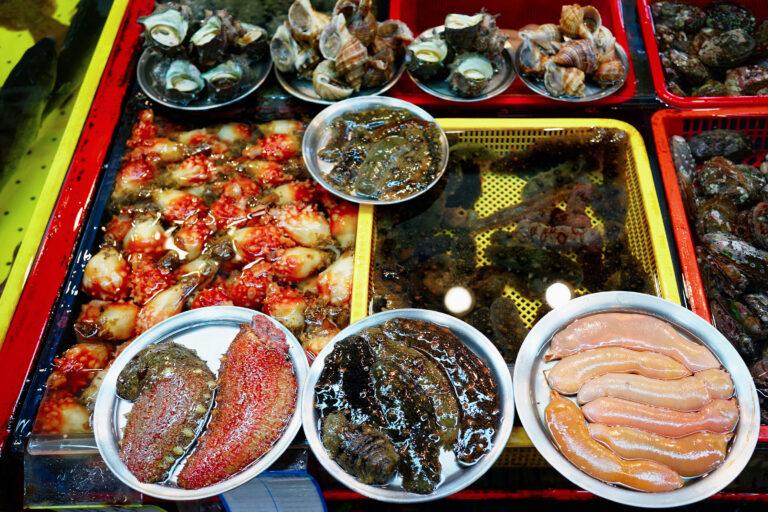Due to the increasing demand, overexploitation has led to a decline in the populations of sea cucumbers. Aquaculture and fisheries of new species in new regions are helping to meet the demand. This change to new regions and to new species may pose a challenge to the food safety of sea cucumber products. The content of contaminants varies both with species and the degree of industrial activity in the region.
Sea cucumbers are known as deposit or suspension feeders, feeding on suspensions near the bottom, sediments and deposited organic matter. Thus, sea cucumbers absorb nutrients and contaminants from their ocean habitat and play a key role in nutrient recycling. Sediments are associated with higher concentrations of contaminants and heavy metals. The levels in marine sediments are a consequence of in situ geochemical processes, draining from flooded soils, sewage and agricultural, tourist and industrial activities in and around the sites/locations of both harvesting and farming of sea cucumbers. Combined with a suggested lower metabolising capacity or bio-accumulation of POPs and heavy metals, consumption of sea cucumber may have negative impacts for human consumers.
Neither the European Commission, nor the Codex Alimentarius or the National Standard of China have set specific maximum limits (MLs) for sea cucumber on contents of heavy metals (or persistent organic pollutants POPs). In a recent study, the hazard assessment was conducted by comparing contents of heavy metals with MLs given eighter by the European Commission or the MLs given for contents in “bivalves” by the National Standard of China (NSC) for contents in “Aquatic animals and its products”.
A literature search has shown that heavy metals and metalloids, such as mercury, cadmium, lead, and arsenic, are the most studied contaminants. The samples collected did not exceed maximum limits set by the European Commission or the National Standard of China for Hg and Cd, but samples from highly industrialized areas exceeded the limits for Pb. Information on microbial hazards, persistent organic pollutants (POPs), and other contaminants is scarce.
The availability of fresh sea cucumber has increased due to aquaculture. In order to pursue the original flavour, some consumers are reported to prefer to eat raw sea cucumber products, sashimi and sushi, which inevitably causes challenges from a microbial food safety perspective.
Lack of data on daily intake of sea cucumber (quantities, frequencies, product used) add to the challenge of assessing health risks associated with sea cucumber consumption. More rigid monitoring and analysis of contaminants, and data of the consumption, needs to be undertaken to enable a valid health risk assessment of sea cucumber consumption.
Regulations are not in place to protect the consumer, facilitating the production of safe seafood. Altogether, this highlights the need for strategies to improve the knowledge, increase available data related to food safety and develop appropriate guidelines and regulations on the production, processing and utilization of sea cucumbers. In addition, there is a requirement for well-designed controlled trials to confirm pharmaceutical and nutraceutical benefits of sea cucumbers or their extracts.

